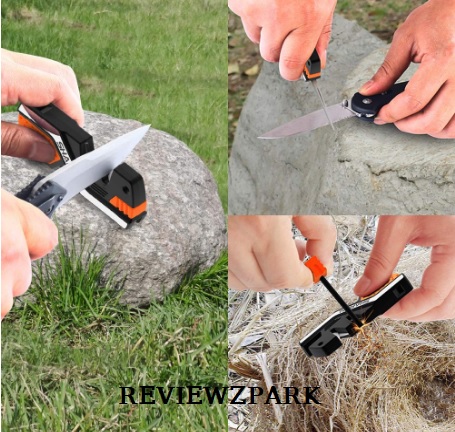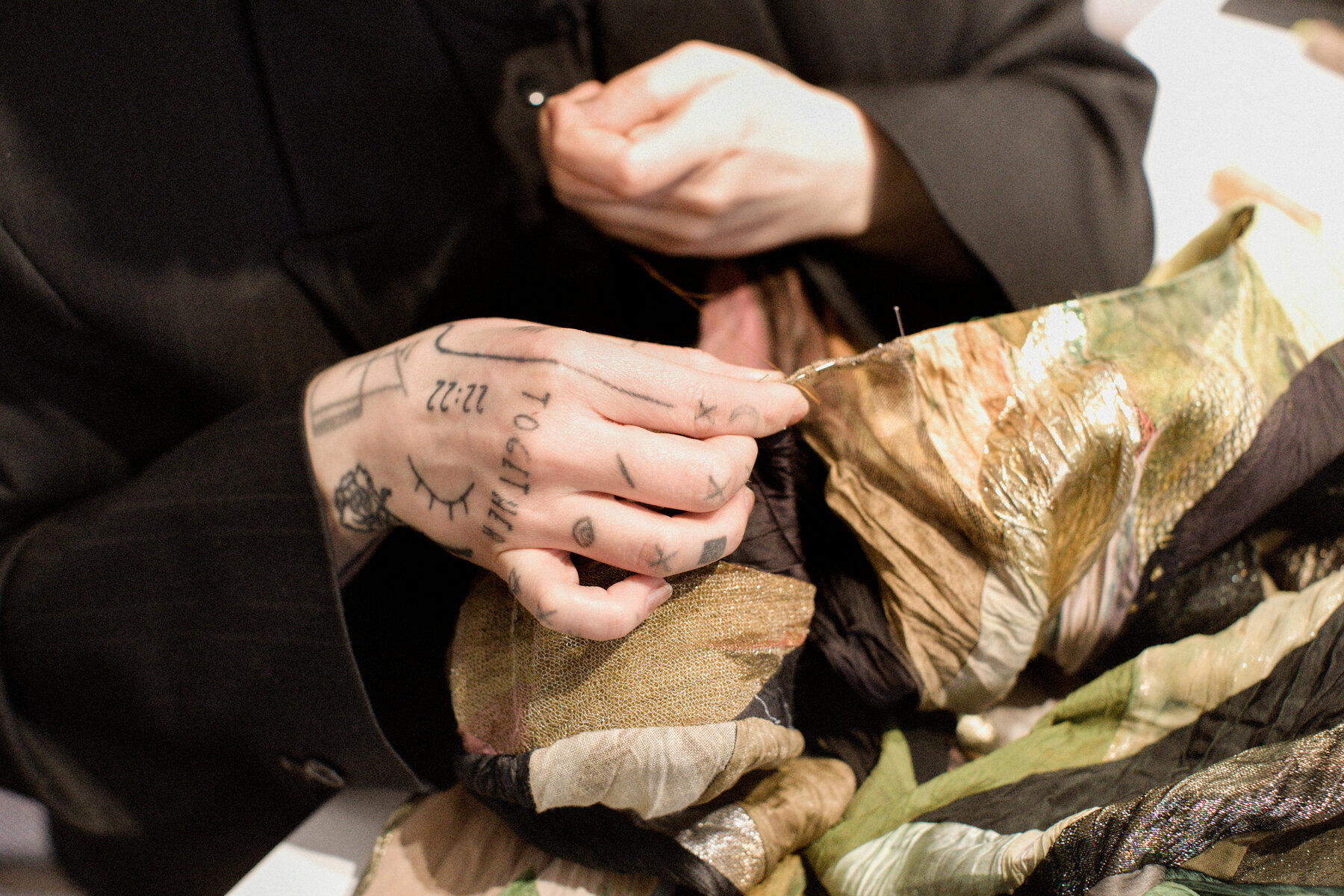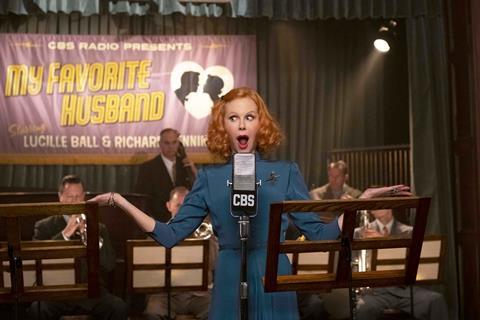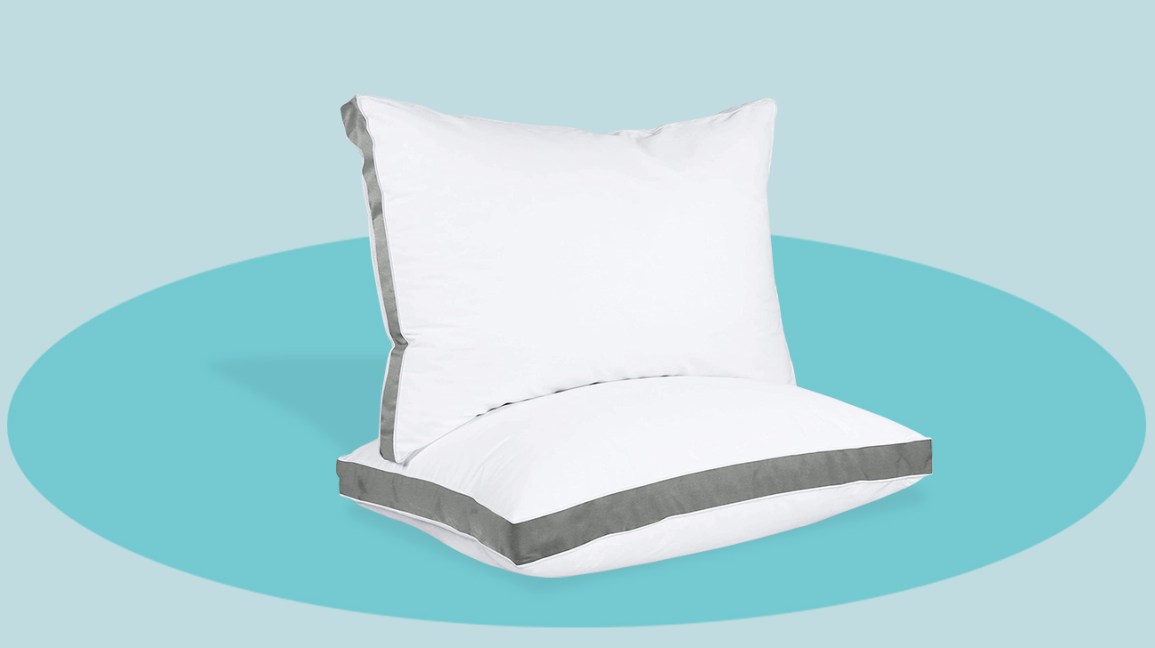Best Pocket Knife Sharpener
When camping out in the wild, a good knife sharpener is a must-have. You need your pocket knife ready to do its job at all times, and you may also be unable to bring your bulky home sharpener along to your trip. Learn about knife sharpener.
If you just so happen to be looking for the best pocket knife sharpener for your upcoming journey, then let us introduce you to what we think are the best knife sharpening systems for pockets knives out there! We will discuss about top 10 Knife Sharpener which are most popular and top reviewed by many people.
Top 10 Knife Sharpener, Lets face it!
Top 1 Sharpener : Sharpal 101N 6-In-1 Pocket Knife Sharpener 
Check Latest Price From Amazon
Behold this little yet very functional guy! This pocket knife sharpener isn’t just a sharpener – it features a fire starter and an emergency whistle, which may not be that necessary for you but may still be able to serve as backup tools.
For knife sharpening, this sharpener has angled grooves for coarse sharpening and fine honing. Not only that, but it has a 400-grit diamond rod which is designed to be used with serrated knives and small items like fishhooks or gut hooks.
Pros:
- A wide range of sharpening tools.
- Functional well beyond just sharpening.
- Can be used with serrated knives.
Cons:
- Its extra bells & whistles are arguably overkill.

Buy From Amazon
Top 2 Sharpener : ALPHA TEK Pocket Hunting Knife Sharpener
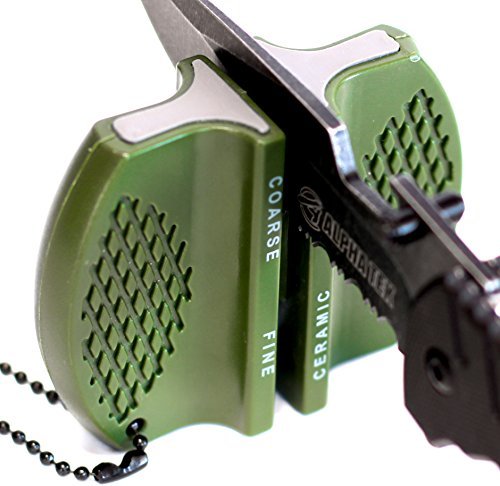
Check Latest Price From Amazon
This pocket knife sharpener by ALPHA TEK is one easy to use sharpener. The textured sides make this thing easy to hold tight, while the non-skid base allows you to keep the knife stable while sharpening.
This sharpener also features a 1,500-grit ceramic abrasive along with coarser carbide to allow for blade reshaping and polishing work.And overall, the ALPHA TEK knife sharpener should work well for restoring badly damaged knives.
Pros:
- Very inexpensive.
- Good for light reshaping and polishing.
- Convenient operation.
- Non-skid base.
Cons:
- The shape makes sharpening the knife’s heel difficult.
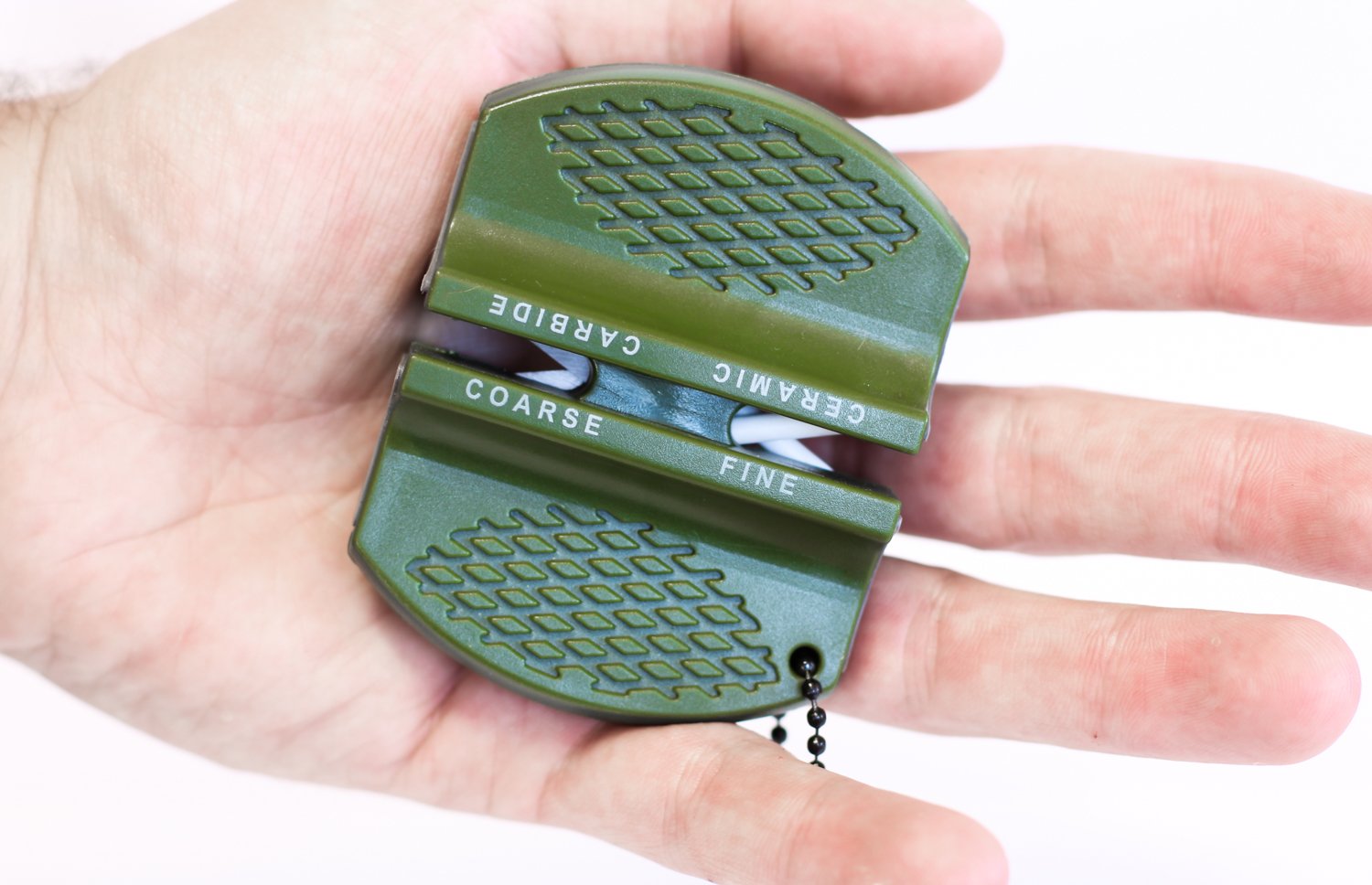
Buy From Amazon
Top 3 Sharpener : Lansky QuadSharp QSHARP Sharpener

Check Latest Price From Amazon
The main benefit of the Lansky QSHARP sharpener is that it allows you to sharpen pocket knives at multiple angles depending on their blade type. This sharpener allows for sharpening at 17, 20, 25, and 30 degrees.Aside from that, this sharpener has an 800-grit benchstone for polishing work, as well as for sharpening serrated knives.
Pros :
- Multiple sharpening angles.
- 800-grit benchstone for polishing.
- Can be used with serrated knives.
Cons :
- Small and not the easiest to hold.

Buy From Amazon
Top 4 Sharpener : Whetstone Cutlery Knife Sharpening Stone

Check Latest Price From Amazon
If you are looking for something simpler, then this whetstone sharpener by Whetstone Cutlery may be the right option for you.
With a fairly large surface, this whetstone is a good option not only for pocket knives but for a variety of other cutting tools. And thanks to its two sides – one 400- and the other 1,000-grit – this whetstone can be used for edge shaping and polishing out in the field.
Pros :
- Easy to use.
- Suitable for a wide range of cutting tools.
Cons :
- Very basic.
- Relatively short lifetime.

Buy From Amazon
Top 5 Sharpener : Work Sharp Guided Field Sharpener

Check Latest Price From Amazon
If you are ready to pay the money for a good sharpener, the Work Sharp Guided Field Sharpener is an excellent all-in-one sharpening tool.
This thing allows you to do a wide range of tasks from sharpening to polishing thanks to the provided 4 sharpening surfaces. And to allow you to maintain the knife edge, this thing features integrated 20- and 25-degree guides.
Pros :
- Does everything from edge shaping to polishing.
- Works with serrated knives.
- Compact yet functional.
- All the sharpening surfaces are removable.
Cons :
- A bit pricey.
- Not the easiest to hold.

Buy From Amazon
Top 6 Sharpener : Lansky PS-MED01 BladeMedic

Check Latest Price From Amazon
Yet another compact and versatile sharpener on our list!The Lansky PS-MED01 BladeMedic features carbide and ceramic sharpening surfaces angled at 22.5 degrees to allow for optimal edge shaping and polishing. Besides, this little guy boasts a serrated knife sharpener along with a diamond-tapered rod for quick polishing and maintenance.
Pros :
- Can sharpen serrated knives.
- Ceramic rod for polishing.
Cons :
- A little difficult to hold.

Buy From Amazon
Top 7 Sharpener : Smith’s PP1 Pocket Pal Multifunction Sharpener
Check Latest Price From Amazon
If you are concerned with storage efficiency, then the Smith’s PP1 Pocket Pal sharpener may be the best pocket knife sharpener for you.
This sharpener is very similar to the Lansky PS-MED01 BladeMedic sharpener, with the main difference being that it doesn’t have a benchstone for quick polishing. It still has preset sharpening angles though, as well as is capable of sharpening serrated blades!
Pros :
- Can sharpen serrated blades.
- Extremely compact.
Cons :
- Not the easiest to use sharpener.
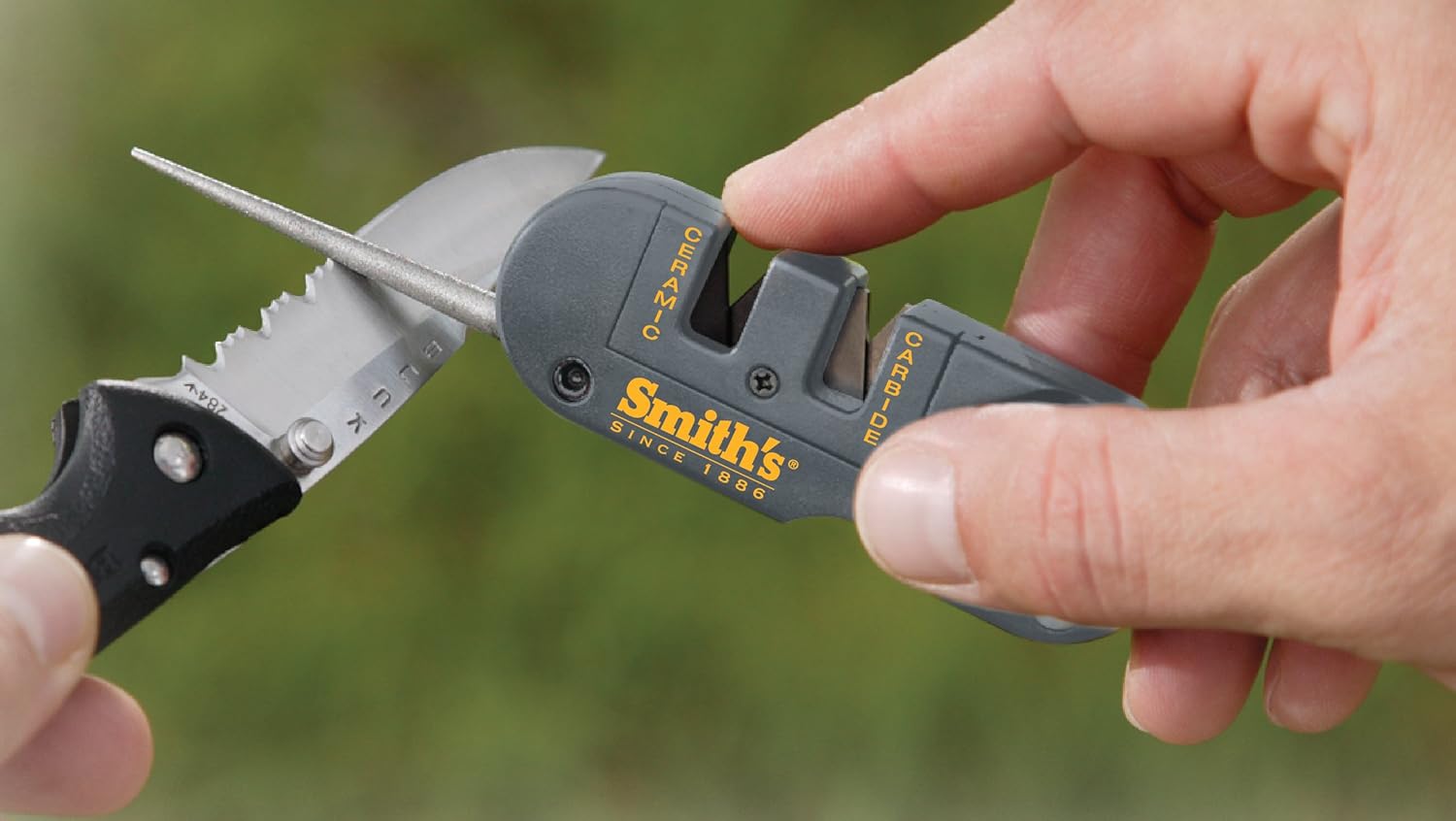
Buy From Amazon
Top 8 Sharpener : Sharp Pebble Whetstone Knife Sharpening Stone
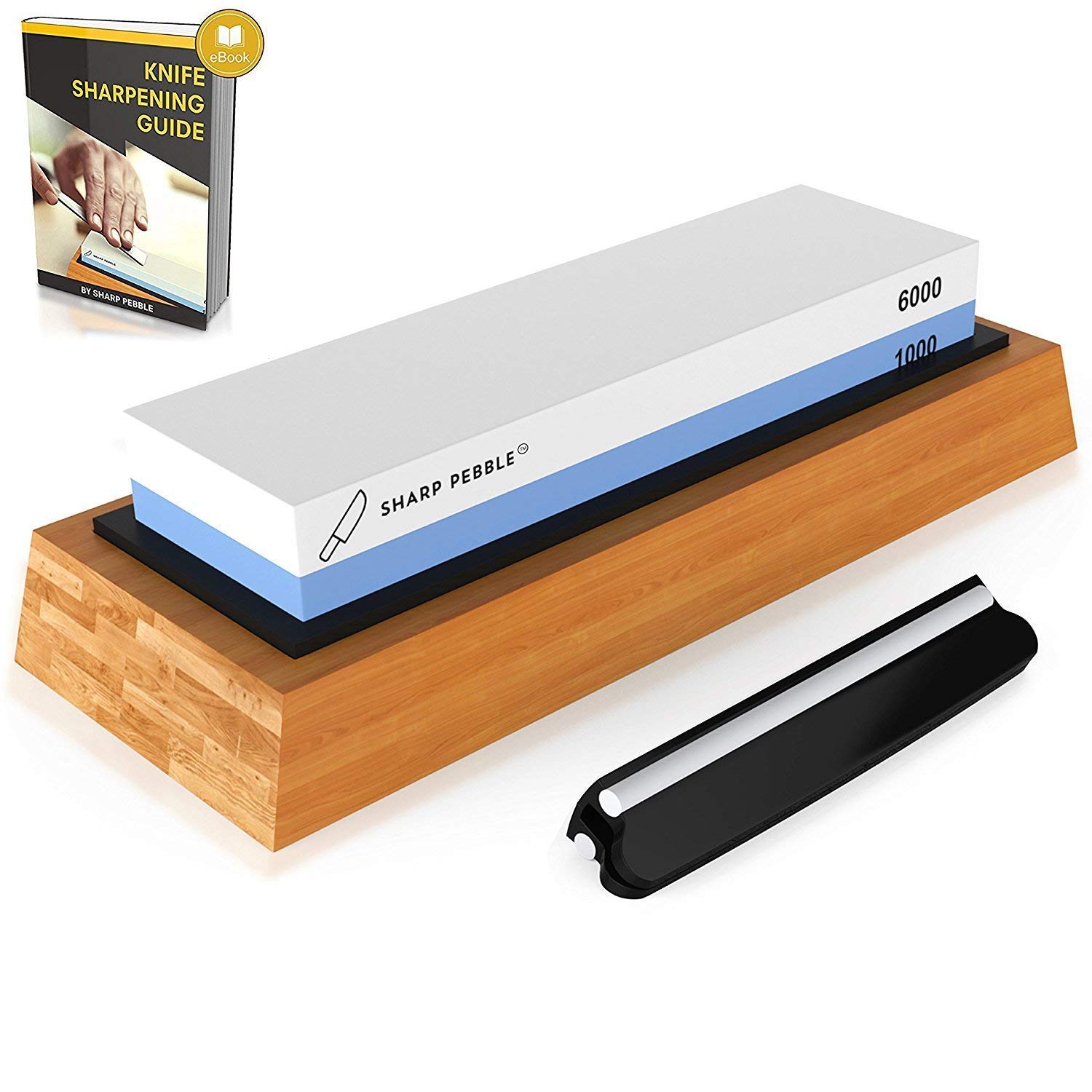
Check Latest Price From Amazon
For treating not too damaged blades, this whetstone by Sharp Pebble is an excellent option.
This whetstone’s 1,000-grit side allows treating light damage, while the 6,000-grit side should be excellent for getting that smooth blade polish.
Sharp Pebble also kindly includes angle guides and an anti-skid base with this sharpener to make your job a little bit easier.
Pros :
- Great for light edge reshaping and polishing.
- Angle guides and anti-skid base included.
Cons :
- Rather expensive.
- Won’t work well with heavily damaged blades.
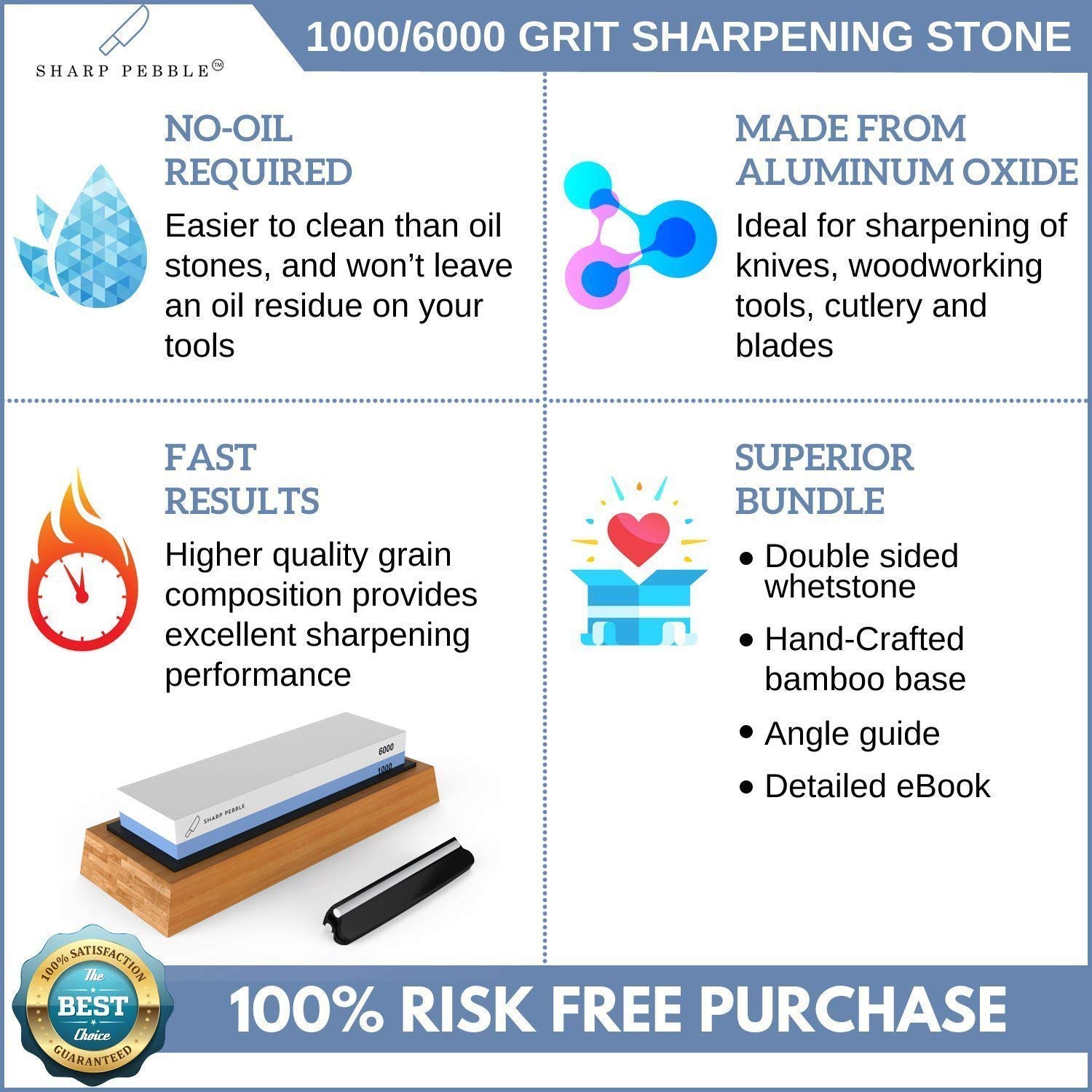
Buy From Amazon
Top 9 Sharpener : Chefic BearMoo Whetstone 2-in-1 Sharpening Stone
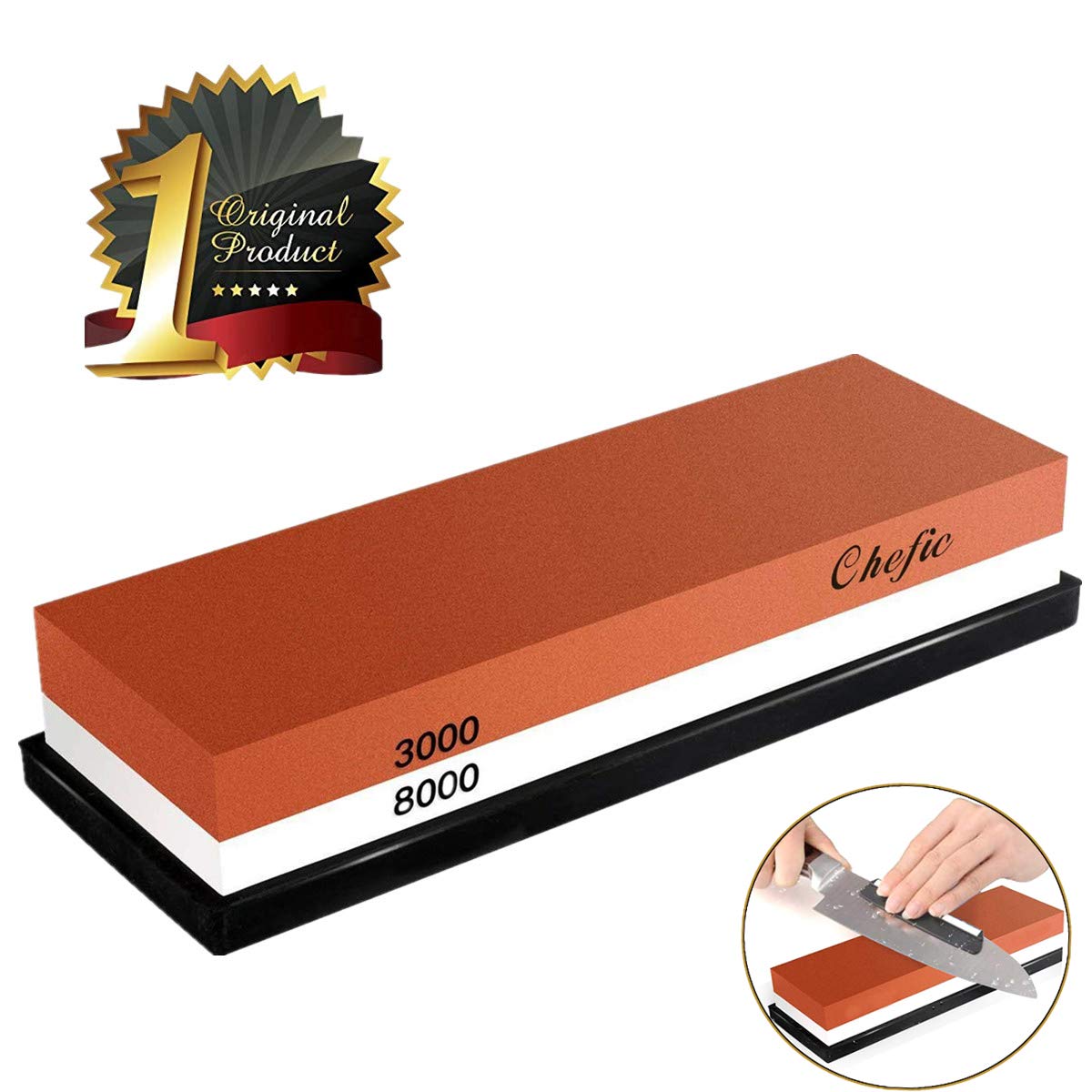
Check Latest Price From Amazon
If you want a sharpening stone for polishing rather than for repairing edge damage, then the BearMoo whetstone by Chefic may be that best pocket knife sharpener for you.
Equipped with 3,000- and 8,000-grit sides, this whetstone should be able to deliver an unparalleled polish among the sharpeners overviewed. And to help you with getting that polish, Chefic includes an anti-skid silicone base with this sharpener.
Pros :
- Excellent for blade polishing.
- Anti-skid silicone base included.
Cons :
- Not for blade edge repair.
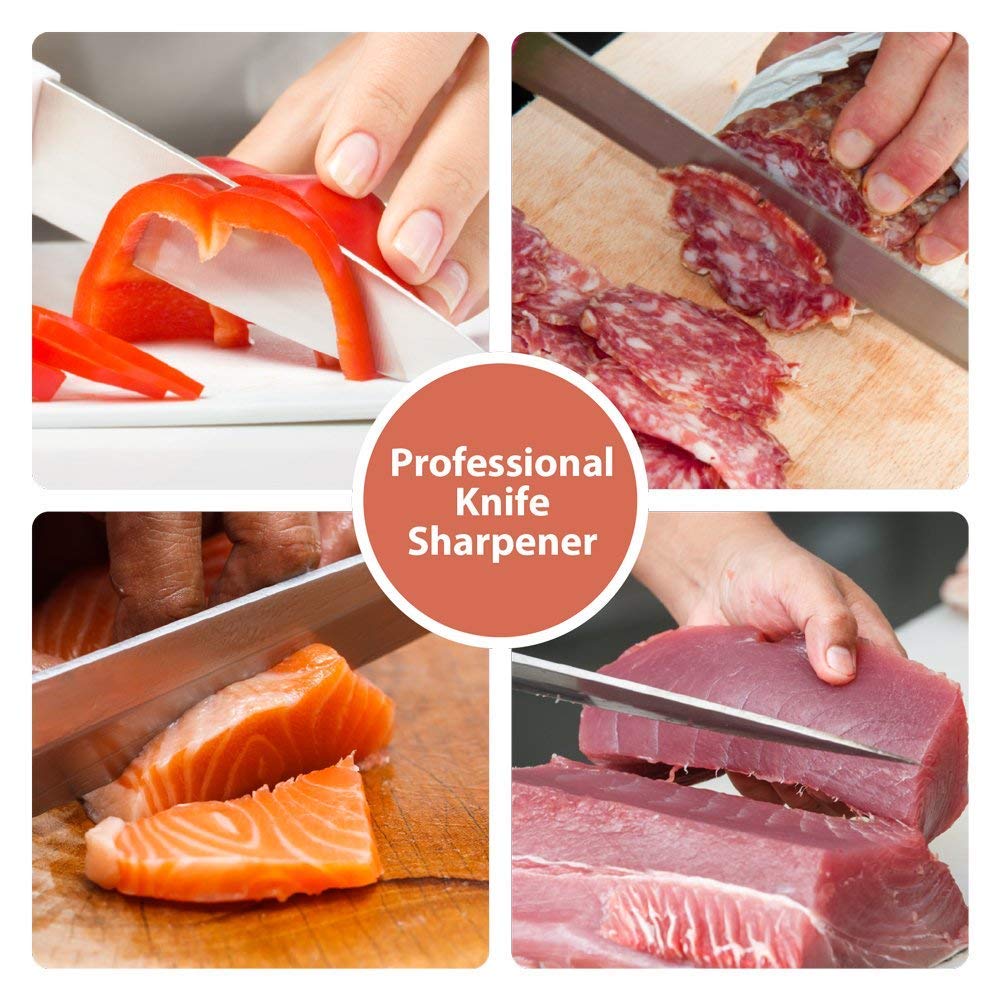
Buy From Amazon
Top 10 Sharpener : Lansky Deluxe 5-Stone Sharpening System

Check Latest Price From Amazon
This pocket knife sharpening kit is one versatile product.
First off, the Deluxe sharpening system includes 5 stones for tasks ranging from blade repair to polishing.
Then, you are also gettingtools to allow you to adjust thesharpening angle to restore that original blade shape.
And finally, Lansky provides you with a knife clamp and honing oil to help you get started quicker.
Pros :
- Extremely versatile.
- Does everything from blade repair to polishing.
- Allows for angle adjustment.
- Knife clamp and honing oil included.
Cons :
- Requires some getting used to.
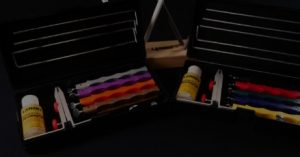
Buy From Amazon
Conclusion
There are many types of knife sharpeners out there, and you should understand your needs to make the right choice.If you are looking to do heavy damage repair, then go for a sharpener with a coarser grit.If you want to keep your pocket knife razor-sharp all the time, a finer sharpener may be better.
In the end, if you think that one of the overviewed sharpeners is that best pocket knife sharpener, maybe you should go ahead and buy it!
138 77 Blood Pressure
Blood pressure is a vital sign that measures the force of blood against the walls of arteries. It’s composed of two numbers: systolic pressure (the top number) and diastolic pressure (the bottom number). A normal blood pressure reading is lower than 120/80 mmHg.If your blood pressure is higher than that, it means you have high blood pressure (hypertension).
High blood pressure can be dangerous because it makes the heart work harder to pump blood throughout your body. This can lead to heart disease, stroke, kidney problems, and other health problems.
If you have high blood pressure, you’re not alone. In the United States, one in three adults has this condition. High blood pressure is often called the “silent killer” because it usually has no symptoms.
That’s why it’s important to get your blood pressure checked regularly. If left untreated, high blood pressure can cause heart disease, stroke, and kidney failure. There are things you can do to lower your blood pressure, such as eating a healthy diet and being active.
You can also talk to your doctor about medications that may help lower your blood pressure.
What is a Normal Blood Pressure Reading?
Is 138 Over 77 A Normal Blood Pressure Reading?
High blood pressure, also known as hypertension, is a condition in which the force of your blood against the walls of your arteries is high enough that it may eventually cause health problems, such as heart disease. Your blood pressure reading is determined by measuring your systolic and diastolic blood pressures. Systolic blood pressure, the top number, measures the force your heart exerts on the walls of your arteries each time it beats.
Diastolic blood pressure, the bottom number, measures the force your heart exerts on the walls of your arteries in between beats. A normal blood pressure reading would be considered to be anything below 120/80 mmHg. However, if one or both of those numbers are consistently higher than that – for example 138 over 77 – it may be indicative of high blood pressure.
If you’re concerned about your blood pressure readings, you should speak with a doctor or medical professional to get their opinion and discuss next steps.
Is 138 Too High for Blood Pressure?
High blood pressure, also known as hypertension, is a condition in which the force of your blood against your artery walls is too high. Blood pressure is determined both by the amount of blood your heart pumps and the resistance of your arteries to blood flow. The higher your blood pressure, the harder your heart must work to pump blood through your arteries.
If left untreated, chronic high blood pressure can lead to serious health problems such as heart disease, stroke, and kidney failure. That’s why it’s important to have yours checked regularly and take steps to keep it under control if it’s elevated.
So what is considered too high?
While there isn’t a definitive answer, most experts generally agree that a reading of 140/90 mmHg or above is indicative of hypertension. However, it’s important to keep in mind that different people may have different thresholds for what constitutes high blood pressure. For some people, 130/80 mmHg may be considered elevated while for others it may not be an issue until their readings are consistently in the 140/90 range or higher.
If you’re concerned about your blood pressure readings, talk to your doctor about what they mean for you and what steps you can take to lower it if necessary.
Is 77 Diastolic Normal?
While there is no one-size-fits-all answer to this question, a diastolic blood pressure reading of 77 is generally considered to be within the normal range. This means that, for most people, a diastolic blood pressure reading of 77 would not be cause for concern. However, it is important to keep in mind that what is considered “normal” can vary from person to person.
Therefore, if you are concerned about your diastolic blood pressure reading, it is always best to speak with your doctor.
Is 138 Over 76 a Good Blood Pressure Reading?
No, a blood pressure reading of 138 over 76 is not considered a good blood pressure reading. A good blood pressure reading is typically 120/80 or lower.

Credit: www.tarladalal.com
138/77 Blood Pressure in Pregnancy
For pregnant women, blood pressure is one of the most important things to monitor. A normal blood pressure reading is 120/80 mmHg or lower. If your blood pressure is consistently above this, it’s considered high blood pressure (hypertension).
Pregnancy can cause hypertension, which can lead to serious complications for both mother and baby.
If you have hypertension during pregnancy, it’s important to work with your healthcare team to manage it. This may include taking medication and making lifestyle changes.
With proper treatment, most women with hypertension will have a healthy pregnancy and delivery.
128/77 Blood Pressure
If you have ever been to the doctor, chances are they have taken your blood pressure. Blood pressure is measured with two numbers, systolic and diastolic. Systolic is the top number and represents the pressure in your arteries when your heart beats.
Diastolic is the bottom number and represents the pressure in your arteries between heartbeats. A normal blood pressure reading should be around 120/80 mmHg. If your reading is higher than that, you may have high blood pressure, or hypertension.
High blood pressure can be dangerous because it puts extra strain on your heart and arteries. If left untreated, it can lead to serious health problems like heart disease, stroke, or kidney failure.
There are a few things you can do to lower your blood pressure if it’s high.
One is to eat a healthy diet that includes lots of fruits, vegetables, and whole grains. Another is to exercise regularly. You should also try to limit how much salt and alcohol you consume.
If lifestyle changes aren’t enough to lower your blood pressure, medication may be necessary. There are a variety of different medications that can help lower blood pressure by widening arteries or decreasing the amount of fluid in the body.
Blood Pressure by Age
As we age, our blood pressure naturally begins to rise. This is because the arteries and other blood vessels lose some of their elasticity, or ability to stretch and contract. At the same time, the heart muscle may thicken and force the blood to flow through narrower channels.
All of these changes can cause an increase in blood pressure.
For most people, this gradual rise in blood pressure does not cause any problems. However, it is important to monitor your blood pressure regularly, especially as you get older.
If your blood pressure becomes too high, it can lead to serious health problems such as heart disease, stroke, and kidney failure.
There are a few things you can do to help keep your blood pressure under control:
• Eat a healthy diet that includes plenty of fruits, vegetables, and whole grains.
• Exercise regularly. Even moderate exercise can help lower your blood pressure.
• Limit how much alcohol you drink.
Men should have no more than two drinks per day; women should have no more than one drink per day.
How to Lower Blood Pressure
If you’re one of the millions of Americans with high blood pressure, there are things you can do to lower it. High blood pressure is often caused by a combination of factors, including diet, weight, stress, and genetics.
Diet: Eating a healthy diet is one of the best ways to lower your blood pressure.
A diet rich in fruits and vegetables can help reduce your risk of developing high blood pressure. Aim for four to five servings of fruits and vegetables per day. And be sure to include foods that are low in sodium and fat.
Weight: Being overweight or obese increases your risk of developing high blood pressure. If you’re carrying extra weight, losing even a few pounds can lower your blood pressure significantly.
Stress: Stress can cause your blood pressure to rise.
Try to find ways to relax and manage stress effectively. Exercise, meditation, and deep breathing are all great ways to reduce stress levels.
Genetics: If you have a family history of high blood pressure, you may be more likely to develop it yourself.
But even if genetics are working against you, there are still things you can do to lower your risk.
Normal Blood Pressure
Normal blood pressure is often defined as a reading of 120/80 or lower. Anything above this is considered high blood pressure. High blood pressure can lead to heart disease, stroke, and kidney failure.
There are many things you can do to lower your blood pressure, including eating a healthy diet, exercising regularly, and avoiding smoking. If you have high blood pressure, it’s important to work with your doctor to find a treatment plan that works for you.
Stage 1 Hypertension
If you have stage 1 hypertension, it means that your blood pressure is consistently high. Your systolic blood pressure (the top number) is between 130 and 139, or your diastolic blood pressure (the bottom number) is between 80 and 89. This is considered mild hypertension, but it’s still a serious condition that needs to be treated.
If you have stage 1 hypertension, you’re at increased risk for developing heart disease, stroke, and kidney disease. That’s why it’s important to take steps to lower your blood pressure and protect your health.
There are many things you can do to lower your blood pressure, including eating a healthy diet, getting regular exercise, and avoiding tobacco use.
If lifestyle changes aren’t enough to lower your blood pressure, medication may also be necessary.
If you have stage 1 hypertension, don’t wait to take action. Work with your doctor to develop a plan for lowering your blood pressure and protecting your health.
130/80 Blood Pressure Ok
Is 130/80 blood pressure normal? What does it mean if your blood pressure is 130/80?
If your blood pressure is130/80, it means that your systolic blood pressure (the top number) is 130 and your diastolic blood pressure (the bottom number) is 80.
A normal blood pressure reading is 120/80 or lower. If your systolic blood pressure is consistently above 140 and/or your diastolic blood pressure is above 90, you may have high blood pressure (hypertension).
High blood pressure puts you at risk for heart disease and stroke, which are leading causes of death in the United States.
If you have high blood pressure, you should see your doctor and take steps to lower it.
Conclusion
If you’re one of the estimated 77 million Americans with high blood pressure, you may be worried about how to lower it. High blood pressure is a major risk factor for heart disease, stroke, and kidney failure. The good news is that there are many things you can do to lower your blood pressure.
Here are some tips:
-Get regular exercise. Exercise helps your heart pump more efficiently and can help reduce stress.
-Eat a healthy diet. Eating plenty of fruits and vegetables can help lower your blood pressure. Avoid processed foods, salt, and alcohol.
-Reduce stress. Stress can raise your blood pressure, so find ways to relax and de-stress. Try yoga, meditation, or deep breathing exercises.
-Quit smoking.
136 67 Blood Pressure
Hypotension, or low blood pressure, is a condition in which the force of your blood against your artery walls is too low. Blood pressure is measured in millimeters of mercury (mmHg). Normal blood pressure for an adult is around 120/80 mmHg.
If your blood pressure readings consistently fall below 90/60 mmHg, you may have hypotension.
If you have high blood pressure, you’re not alone. In fact, according to the Centers for Disease Control and Prevention (CDC), 1 in 3 American adults has high blood pressure. And while there are many factors that contribute to high blood pressure, including genetics and lifestyle choices, one of the most common causes is simply being overweight or obese.
The good news is that losing weight can help lower your blood pressure. Even a small amount of weight loss can make a big difference. So if you’re looking to improve your heart health, shedding some pounds may be a good place to start.
Of course, it’s not always easy to lose weight. But with some dedication and effort, it is possible. Here are a few tips to help you get started:
1. Cut back on calories. You’ll need to create a calorie deficit in order to lose weight. That means eating fewer calories than you burn each day.
To do this, focus on eating mostly healthy foods like fruits, vegetables, lean protein, and whole grains. And limit yourself to smaller portions sizes at meals and snacks.
2 .
Get moving . Exercise is key when it comes to losing weight and keeping it off . Not only does it burn calories , but it also helps build muscle mass , which can boost your metabolism .
Aim for at least 30 minutes of moderate-intensity exercise most days of the week . walking , biking , swimming , or taking a fitness class .
What is a Normal Blood Pressure Reading?
What Does a Blood Pressure of 138 Over 67 Mean?
A blood pressure reading of 138 over 67 means that the person’s systolic blood pressure is 138 and their diastolic blood pressure is 67. Systolic blood pressure is the top number and corresponds to the heart contracting and pushing out blood. Diastolic blood pressure is the bottom number and corresponds to when the heart relaxes in between beats.
A normal reading would be around 120/80.
Is 136 Too High for Blood Pressure?
If your top number (systolic) is between 120 and 129, and your bottom number (diastolic) is less than 80, you have elevated blood pressure. This means that your blood pressure is higher than it should be and you may be at increased risk for developing high blood pressure in the future. If this continues unchecked, it can lead to hypertension.
While 136 is technically not in the “hypertension” range, it is still considered to be too high for blood pressure. You should consult with a medical professional to get their opinion on what steps you should take next.
Is 136 Over 62 a Good Blood Pressure?
Yes, 136 over 62 is considered a normal and healthy blood pressure reading. This is according to the American Heart Association’s guidelines, which state that blood pressure should be less than 120/80 mmHg.
What Does a Blood Pressure of 136 60 Mean?
If you have a blood pressure reading of 136/60, this means that your systolic blood pressure is 136 and your diastolic blood pressure is 60. Systolic blood pressure is the top number and measures the force your heart exerts on the walls of your arteries each time it beats. Diastolic blood pressure is the bottom number and measures the force your heart exerts on the walls of your arteries in between beats.
A normal blood pressure reading would be 120/80 or lower.
If your systolic blood pressure is elevated at 136, this means that there is increased force on the arteries and can lead to damage over time. This elevation may be caused by factors such as stress, smoking, excess salt intake, or being overweight.
If you have a systolic blood pressure reading of 136, it’s important to take steps to lower it back down into the normal range by making lifestyle changes and/or taking medication.
Similarly, a diastolic blood pressure reading of 60 indicates that there is less force on the artery walls between beats which can also lead to damage over time if left untreated. This decrease in force may be due to factors such as dehydration or low kidney function.
If you have a diastolic blood pressure reading of 60, treatment will depend on what is causing this decrease in force but may include things like fluids IV therapy or medications.
/cdn.vox-cdn.com/uploads/chorus_asset/file/21702303/usa_today_13639645.jpg)
Credit: www.landgrantholyland.com
136/67 Blood Pressure Pregnancy
If you’re pregnant and have a blood pressure of 136/67, it’s important to monitor your condition and seek medical attention if necessary. High blood pressure can be dangerous for both mother and child, so it’s important to keep an eye on your numbers. If you’re experiencing any other symptoms like headaches or blurred vision, be sure to mention them to your doctor.
With proper care and monitoring, most women with high blood pressure during pregnancy will go on to have healthy babies.
126/67 Blood Pressure
According to the American Heart Association, a blood pressure reading of 126/67 is considered ideal. This means that your systolic blood pressure (the top number) is at a healthy level and your diastolic blood pressure (the bottom number) is also at a healthy level.
67 Diastolic Blood Pressure
Your heart is a muscle that pumps blood throughout your body. The force with which it pumps depends on how much blood is entering the chamber and how much resistance the chamber walls have to the flow of blood. The amount of blood entering the chamber can be affected by many factors, including your breathing, the level of physical activity you’re engaged in, and medications you may be taking.
The most common measure of how well your heart is pumping is called cardiac output. Cardiac output is the amount of blood pumped by the left ventricle in one minute and is normally about 5 liters per minute (L/min). The left ventricle is the main pumping chamber of your heart.
Your heart rate, or pulse, is a measure of how often your heart beats. Heart rate is usually expressed as beats per minute (bpm). A normal resting heart rate for adults ranges from 60 to 100 bpm.
A higher than normal heart rate may indicate that your heart isn’t pumping as efficiently as it should be. This could be due to an underlying medical condition or simply because you’re anxious or excited. In either case, it’s important to see your doctor so they can determine if there’s anything wrong.
Blood pressure is a measure of the force exerted by blood against vessel walls and reflects both cardiac output and peripheral resistance to flow. Blood pressure readings are given as two numbers: systolic pressure (the top number) represents the maximum pressure during contraction of the left ventricle; diastolic pressure (the bottom number) represents minimum pressure in between contractions when the ventricle relaxes and fills with blood again. Normal resting systolic pressure for adults ranges from 90 to 120 millimeters of mercury (mmHg), while normal diastolic pressure ranges from 60 to 80 mmHg.
If either or both numbers are consistently high, it’s called hypertension, or high blood pressure . Hypertension puts extra strain on your arteries and organs and can lead to serious health complications like stroke , kidney disease , or heart failure . That’s why it’s important to see your doctor if you think you may have high blood pressure so treatment can begin right away.
Treatment typically involves lifestyle changes like eating a healthier diet , exercising more often , quitting smoking , and reducing stress .
Stage 1 Hypertension
Stage 1 hypertension is when your systolic blood pressure (the top number in a blood pressure reading) is 130 to 139 or your diastolic blood pressure (the bottom number in a blood pressure reading) is 80 to 89. These numbers are higher than normal, but they’re not high enough yet to be considered stage 2 hypertension.
138/88 Blood Pressure Female
If your blood pressure is 138/88, it means that your systolic (top number) pressure is 138 and your diastolic (bottom number) pressure is 88. A systolic blood pressure of 138 isn’t too high, but a diastolic blood pressure of 88 is considered elevated.
Elevated blood pressure means that your heart has to work harder than normal to pump blood through your arteries.
This can put strain on the heart and over time can lead to heart disease or stroke.
If you have an elevated blood pressure, there are things you can do to lower it. Losing weight if you’re overweight, eating a healthy diet, reducing salt intake, and getting regular exercise can all help lower blood pressure.
If lifestyle changes aren’t enough, medication may also be necessary.
If you have an elevated blood pressure of 138/88, talk to your doctor about what you can do to lower it and protect your health long-term.
How to Lower Blood Pressure
If you have high blood pressure, there are things you can do to lower it. Losing weight, eating a healthy diet, exercising, and reducing stress can all help. Medications may also be necessary.
If you’re overweight or obese, losing weight will help lower your blood pressure. Even a small amount of weight loss can make a difference. To lose weight, eat fewer calories and exercise more.
You can cut calories by eating smaller portions, choosing low-fat and low-sugar foods, and avoiding processed foods. Exercise burns calories and helps you lose weight. Aim for at least 30 minutes of moderate exercise most days of the week.
If you haven’t been active recently, start slowly and build up gradually.
Eating a healthy diet is important whether you’re trying to lose weight or not. Eating lots of fruits and vegetables can help lower blood pressure as well as improve your overall health.
Try to cook at home more often so you know exactly what’s in your food. When dining out, choose healthier options such as grilled chicken or fish instead of fried items or cream-based sauces. Reducing the amount of sodium in your diet is also important since salt contributes to high blood pressure .
Limit processed foods , which are often high in sodium , and read food labels to see how much sodium is in each serving . Opt for fresh fruits and vegetables , lean protein sources , whole grains , and low – fat dairy products .
In addition to lifestyle changes , medications may be needed to control blood pressure .
If your blood pressure is very high or if lifestyle changes alone aren’t enough to lower it , medication may be necessary . There are several different types of medications used to treat high blood pressure . Your doctor will work with you to find the best medication or combination of medications for your individual needs .
Conclusion
If you have high blood pressure, you’re not alone. In the United States, one in three adults has high blood pressure, according to the Centers for Disease Control and Prevention (CDC). And two-thirds of those with high blood pressure don’t have it under control.
High blood pressure is often called the “silent killer” because it usually has no symptoms. But if left untreated, it can lead to heart disease, stroke, and other serious health problems.
The good news is that there are things you can do to lower your blood pressure.
Lifestyle changes such as eating a healthy diet, getting regular exercise, and quitting smoking can make a big difference. Medications can also help.
If you have high blood pressure, talk to your doctor about what you can do to lower it.
Don’t wait until your next checkup. Taking action now could save your life!
